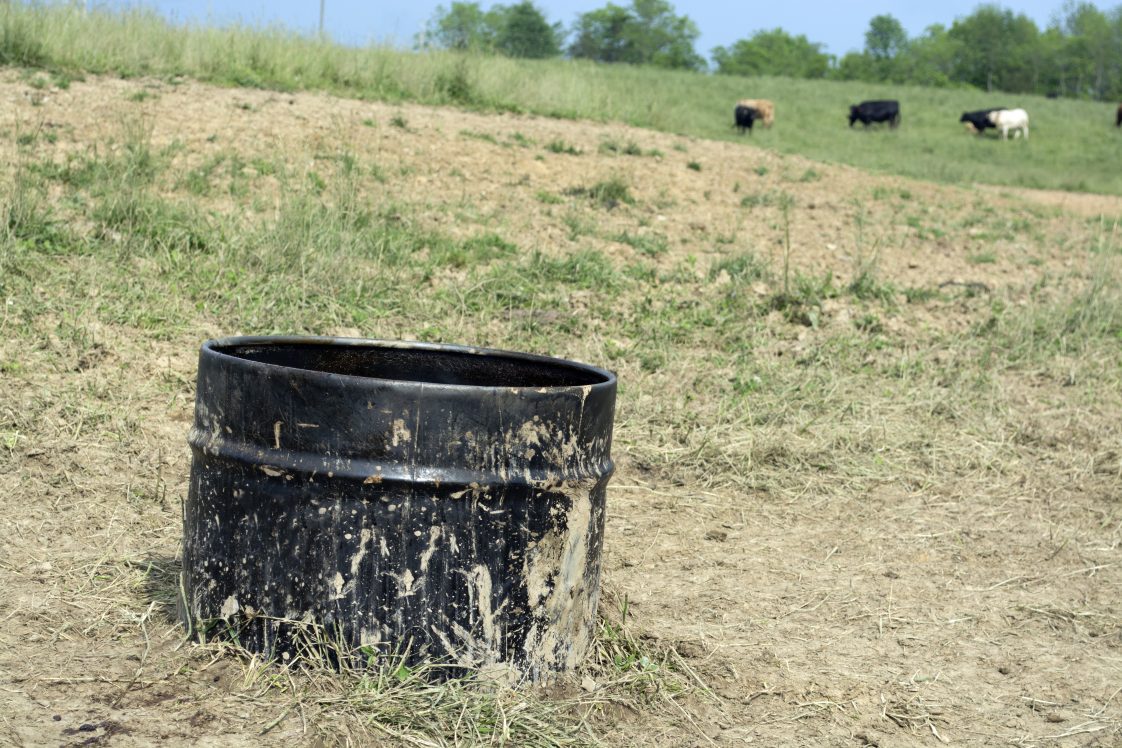Beef

Tub supplements for cattle are often molasses based. The following information answers some of the most frequently asked questions surrounding feeding molasses-based tub supplements to brood cows.
When feeding hay in winter, how much supplement should I feed?
The adage if you don’t test, it’s just a guess rings true in this case. Without knowing the quality of the hay, it is simply a guess as to how much supplement should be fed or if supplement is needed at all. A forage analysis will provide information on relative forage quality, the percentage of total digestible nutrients (TDN), and the percentage of crude protein (CP) in the hay. Even with medium-quality hay (10% CP and 50% TDN), energy is typically more limiting than protein for brood cows.
Are molasses-based tubs good protein supplements for cows?
These products are often formulated to limit intake to 1 to 3 pounds of product per day. This amount of consumption may correct protein deficiencies but not energy deficiencies of brood cows when fed with low-to-average-quality hay (less than 10% CP and 50% TDN). The ability to put out tubs for cattle and let them self-feed certainly saves time and labor when compared with hand feeding. However, the cost per ton is greater than other protein supplements.
The feed analysis tag lists a value for the percentage of CP and NPN. What is the difference?
The percentage of CP consists of both natural protein and non-protein nitrogen (NPN). Natural protein is true protein that is found in naturally occurring sources. NPN is often used in supplements to decrease the cost of protein supplementation. Urea is a commonly used NPN source. Natural protein is utilized more effectively by cows than NPN is when fed with the low-to-average0-quality hay (less than 10% CP and 50% TDN) that is typically found in Alabama. Most NPN cannot be used by the animal without adequate energy supplementation in the diet. No more than one-third of the supplemental protein should be from NPN.
What is the energy value of molasses in tubs?
Molasses is a good energy source (75 to 80% TDN). It consists of simple sugars but is low in protein. Urea, natural protein sources, or a combination of both are often added to molasses supplements to increase the protein value. The addition of fat (up to 15%) also increases the energy value of a molasses-based supplement.
Are molasses-based tubs a good energy supplement for cows?
Most tub-based supplements are formulated to limit consumption to 1 to 3 pounds of product per head per day. Because of this low rate of consumption, they are not designed to correct for energy deficiencies but serve as carriers for protein and mineral supplementation. Recall that energy is typically the most critical nutritional consideration for lactating brood cows that are fed low-to-medium quality hay. In many cases, it is likely that additional energy supplementation is needed for lactating cows outside of both hay and molasses-based tub supplements. This can be corrected by feeding a small quantity of a fiber-based, high-energy coproduct (e.g., soyhulls, corn gluten feed, dried distillers grains with solubles) in addition to the molasses supplement.

